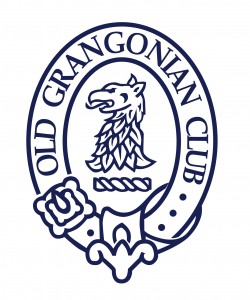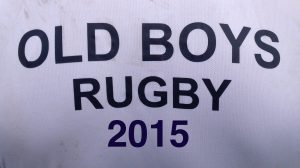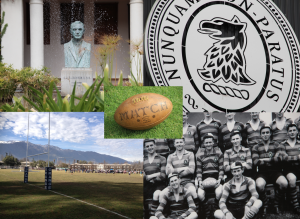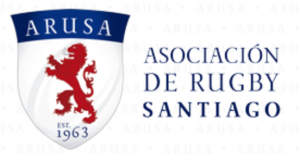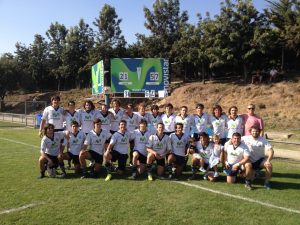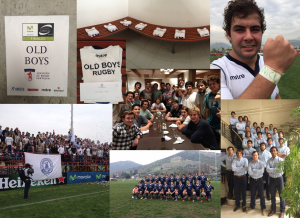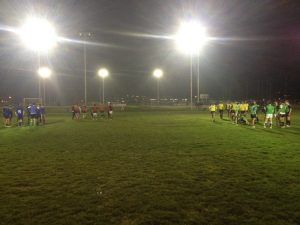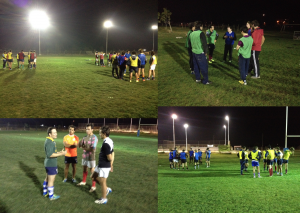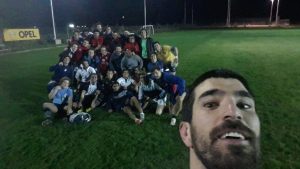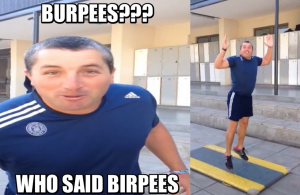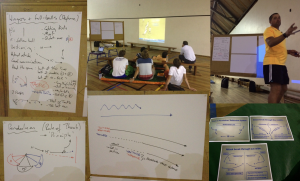Old Boys 2015
My time coaching at Old Boys started towards the end of 2014 in a voluntary role when Edmundo Olfos, Head Coach, asked me to help him during the 2014 ARUSA (Asociacion de Rugby de Santiago) 7s Series during November and December, with training beginning in October.
After this period of time I was formally brought on-board as one of the coaching staff for Old Boys ready for the 2015 season.
The preparations and background for the 2015 season began a long time before this point in time. I have known Edmundo ever since I first arrived in Chile back in April 2013 and since that moment we have continually communicated together our thoughts, ideas, philosophy, observations, knowledge and experiences from all around the world. Edmundo has a lot of knowledge too and has experienced many different environments from being the Head Coach of Chile 7s trying to qualify for the World 7s Series, attending the world famous IRANZ Academy in 2009 in Palmerston North in New Zealand run by Murray Mexted, studying at Stellenbosch University in South Africa and setting up his own business and Rugby Academy TCM (Training, Coaching, Management) in Chile helping to improve Chilean rugby across the board in all 3 areas.
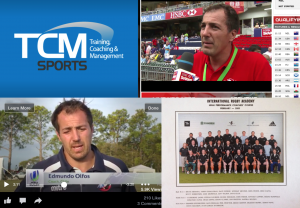
During 2013 I came to the club as a player to experience what it was like to train and play in the club and to give me an opportunity to help build the complete “BIG picture” of the ‘Grangonian Rugby Experience’ during the first few months of my time in Chile. I attended several training sessions and played a few matches for the club throughout the 2013 season, including the ‘Old Grangonian Day’ where the Old Boys play the School 1st XV.
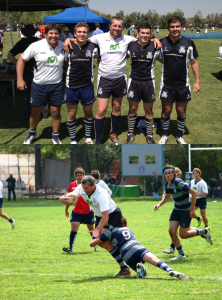
During 2014 I continued this approach, especially when the club was in need of players because of many, many injuries and a very low number of players going to the club to train. I played several times in the Old Boys 1st XV to help the team out in their time of need.
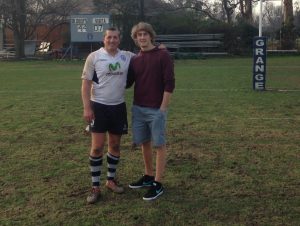
A key part I discovered and observed during the first 2 years that was at the heart of ‘why’ the players go to Old Boys was their unique bond and friendship each player has within their own Generation. It is a key driver and the main motivator as to why they play rugby. One event really shows this and that is the Inter-Generation 7s Tournament held every year during the 7s season in November where each Generation that has left the school play against each other. So if you can really “connect” with the player and find out what ignites his spark then you are on to a real winner…
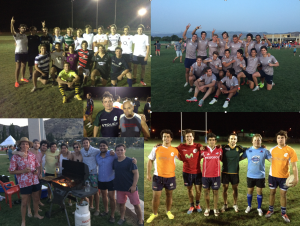
Again, Simon Sinek’s “Start with WHY” is a fundamental part at the beginning of a process knowing your “WHY”… which can inspire and motivate people to become the best that they can be.
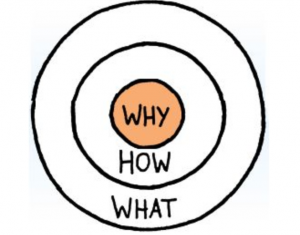
So having experienced every area of the ‘Grangonian (School and Club) Rugby Experience’ I was in an excellent position to join the coaching team for the 2015 season…
Here is a brief description of the situation I was walking into…:-
- Old Boys had almost been relegated into the 2nd Division for the first time in their history; (Losing 25-19 with 10 minutes left in the last match of the season);
- Old Boys finished 13th (their lowest ever position in the National Championship);
- An average of 25 players attending training each week;
- Only 25% of the playing squad were physically “ready” to play rugby based on the standards set by the S&C coach;
- Too many injuries;
- 9 players having had ACL knee surgeries;
- Loss of team spirit;
- No “experienced’ players playing in the club anymore (players over the age of 30);
- Lack of motivation to go the club;
- and Winning the National Championship only twice in the last 21 years (having won the National Championship 10 times in the previous 21 years).
These 4 pictures sum up this situation…
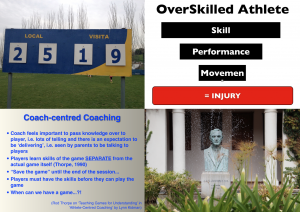
Throughout the summer vacations, December to February, prior to the season starting towards the end of March, Edmundo and I regularly met up to discuss the way forward and how we wanted to work together. A key part was for us both to understand each other to make sure we were on the same page as a coaching team.
We helped this process by identifying the key areas of responsibility we would both have…
|
Edmundo |
Nick |
|
|
Head Coach |
/ |
|
|
Assistant Coach |
/ |
|
|
1st XV |
/ |
|
|
2nd XV |
/ |
|
|
3rd XV |
/ |
/ |
|
Forwards |
/ |
|
|
Backs |
/ |
|
|
Attack |
/ |
|
|
Defence |
/ |
|
|
Scrums |
/ |
|
|
Lineouts |
/ |
|
|
Counter Attack |
/ |
|
|
Skills (Parts) |
/ |
|
|
‘Conditioned Games’ (Whole) |
/ |
We decided that ‘Player-centred Coaching’ was the way to go…
The “core” ingredients of ‘Player-centred Coaching’ are:-
- Create and Develop a ‘Team Culture’;
- Use ‘Teaching Games for Understanding’ (TGfU);
- Use Questioning.
So we started to discuss how we could create and develop a ‘Team Culture’ and plan how we would design our training sessions to put this Philosophy into action… with ‘Games-based Coaching’ being a key ingredient, plus ‘Skills-based Coaching’ working in tandem.
Our project needed meaning… It needed a Vision… It needed an Inspiration… to catch the imagination of the players to be inspired to #BeTheBestYouCanBe #ForTheTeam.
The fundamental factor would be trying to make “BETTER People”, based on one of the “core” principles the New Zealand All Blacks, the most successful professional sports team ever, created and applied when they changed their ‘Culture’ back in 2005, from the book written by James Kerr.
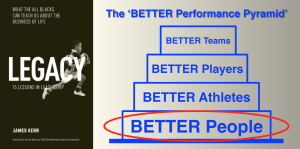
Edmundo came up with the slogan “One Team… One Club… One Family…” This was an excellent idea, especially with the uniqueness of the club only being compiled of members who have attended The Grange School, i.e. a closed club, and would be at the “core” of our project together…
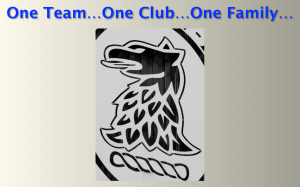
We then formulated the factors that would make up the 3 bubbles of Leadership, Teamship and Partnership as the foundations of our process to help achieve “One Team…One Club…One Family…”, which would show us a very clear path of our work going in to the future… and would be our ‘frame of reference’.
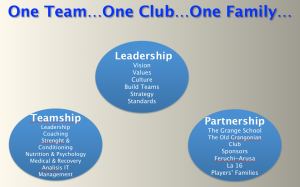
Why the 3 bubbles of Leadership, Teamship and Partnership…? These 3 areas were exactly what Old Boys needed at this point in time. It was the brain child of Sir Clive Woodward and the foundation that helped England win the World Cup in 2003. Edmundo had recently read the book and I already had experience going through the same process and applying the ‘principles’ from the book during my time at Denstone College from 2005 to 2013, when rugby in the College was at a very low point and Denstone College was off the rugby map in the UK. This journey can be seen here… http://nickhillcoaching.com/?page_id=56
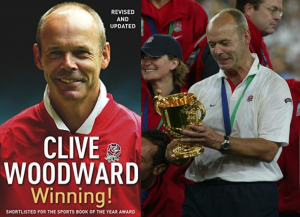
These 4 photos sum up the process that we would start to put in place…
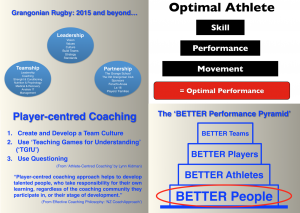
Observing that there was a lack of Leadership in the players in the club, and being inspired while reading Richie McCaw’s book a few years ago I came up with the acronym “GOG”, which would mean ‘Great Old Grangonian’. Richie inspired me to do this from his acronym “GAB”, which means ‘Great All Black’.
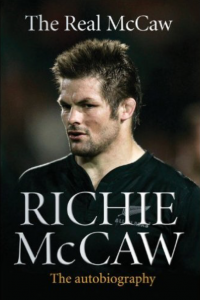
The “GOG” group would become the ‘Player Leadership Group’ providing a link between the coaches and the players. This would consist of the players that we believed have the characteristics that live up to the values of what a ‘Great Old Grangonian’ means. These values are founded in the school from which all the players and Grangonian Community come from, instilled and inspired by John Jackson when he first dreamt about building a school in Santiago in the 1920s. There would be a range of players across the generations from the youngest generations having only recently left the school all the way up to the oldest players currently playing in the club. This would range from players of 18 years old to players of 30 years old. They would create, build, develop and drive the ‘Team Culture’ of ‘Old Boys 2015 and Beyond…’.
The “GOGs” were each shown 5 key photos and asked: “What does each photo mean to you…?”:-
Each photo represented a key area:-
- John Jackson (The founder of The Grange School);
- The Griffin (The core of the badge of the club and the school);
- An old school 1st XV team photo;
- The school playing fields where they had all grown up learning how to play the game;
- and a rugby ball.
We then started to collate their thoughts and they would share their ideas and feelings…
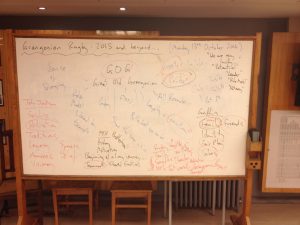
The beginning of the process saw the whole playing squad brought back to its routes… in front of the John Jackson statue in the main quad of the school.
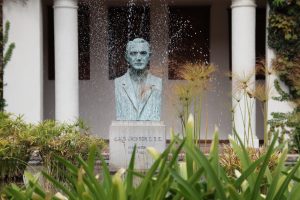
After Edmundo gave the opening speech explaining the process and the journey that we were going to go on, I then gave a speech to the players to explain a few more things which culminated with me asking a final question:-
“Are you ready to rise to the challenge…?! If you are… Walk this way…”
The first part saw the players watch a motivational video with 2 keys questions within the video:-
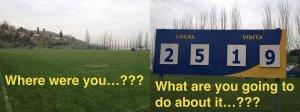
This being the low point at the end of the season in 2014.
The main part of the evening then saw the players split into different groups… with one GOG leader per group. Each group would go off and discuss their thoughts on what ‘Standards & Expectations’ they believed in. They would then sum up their thoughts and return to the Chapel.
The key areas were:-
- Training (Individual & Team);
- Matches (Before, During & After);
- Club (Atmosphere & Social Events);
- Community (Role Models, School & Club links);
- Life (University, Work & Balance).
Each group would then have a maximum of 5 minutes to feedback their ideas to the whole group. Players then had the opportunity to discuss any points they felt and the ‘Standards & Expectations’ were either agreed, changed or tweaked until there was a consensus and buy-in from all the players.
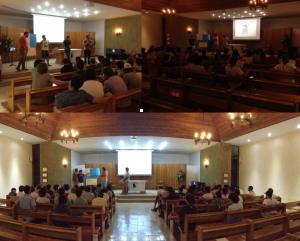
The start of the building of the ‘Team Culture’ saw several players take ownership of painting the changing room to make it more inspirational…
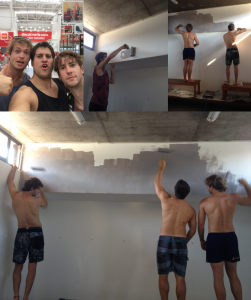
The XV-a-side season is split into 3 stages… The Apertura (i.e. pre-season fixtures), the ADO Central Qualifying and then the ADO Classification stage, from which the Top 4 Semi-final play-off spots are determined.
Apertura Stage
This stage of the season would be from March to mid-May with the official matches beginning in April. As we moved closer to the competitive matches against other teams we organised in-house pre-season practice matches. We would create evenly matched teams so that they were competitive matches so we would get a lot more out of the exercise. The key reason for equal teams was to send the message that it’s a clean slate for everyone, everyone is equal, there are no super stars and there is a genuine open competition for places leading in to the main part of the season.
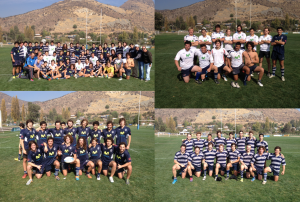
When the opening matches got up and running… we were running along nicely with both teams, 1st XV and 2nd XV, putting decent performances together, particulate the 2nd XV where the team hadn’t existed the season before. Our goal of improving the ‘Player Experience’ was certainly gaining momentum and we were moving in the right direction…
By the end of the Apertura Stage we had made huge strides forward and had laid great foundations for the rest of the season and the future beyond… Then at the end of the Apertura Stage of the season, before the ADO Qualifying Stage, I put together a player questionnaire to get direct and honest feedback from the players…
Player review Questionnaire at the end of the Apertura Stage:-
- Why do you come to Old Boys…?
- Why do you come training…?
- How happy do you feel about your ‘Player Experience’ so far during 2015…? (Plus a Scale 1-10)
- Have you noticed anything different about your ‘Player Experience’ during 2015 so far…? What…? How does it make you feel…?
- How much have you enjoyed my coaching…? (Scale 1-10) Why…?
- What do you like about my coaching…? and why…?
- What do you thin I need to/can work on to get better in my coaching for you…?
- What would you like to see in the future…?
- What do you think, we the club, need to do to make your experience even better…?
The average score for “how happy do you feel about your ‘Player Experience’ so far during 2015” was… 7.65
The average score for “how much have you enjoyed my coaching” was… 7.93
ADO Central Qualification Stage
We continued to provide matches for all the players during the season so that they could stay match fit, but more importantly reward them for all their hard work & efforts coming to training every week… With over 50 players at every training session it was very important as a coaching team to provide the players with opportunities to express themselves on the field. This meant that we had to try to find matches for the Gryphons XV each week. This was hard in the sense of trying to find enough “quality” matches for them as all the other clubs in the competition only had 2 teams, both of which would be playing league games every week, so we had to “think outside the box” to find matches. This challenge was outweighed by the fact that it was important that the players needed to be on the field with their mates and the positive psychological effects this could have on the players, plus the continuation of developing the ‘Team Culture’.

Confidence continued to build with an excellent victory against the 2014 National Champions, Old Macks. This showed how much progress the players had made and that the hard work we were doing on the training paddock was starting to pay off…
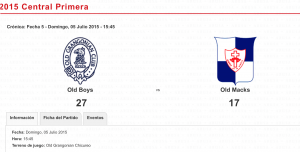
Both teams qualified for the Top 8… The next stage in the season…
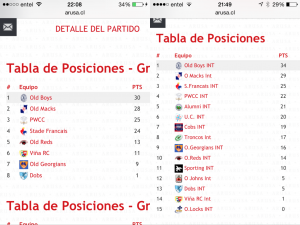
Top 8 Classification Stage
The Top 8 Classification Stage got off to a great start with both teams beating the 2014 Runners-up Troncos from Concepcion. This result gave all the players a confidence boost again…
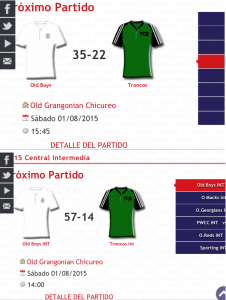
One of the best performances of the season saw the 1st XV revenge the earlier defeat in the season against Country Club…
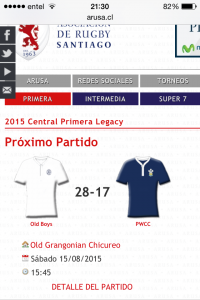
A second victory against the 2014 Champions was an excellent part of the Top 8 stage of the season, especially the nature of this come-from-behind victory that it was, which showed the players had great belief in the team and that they could dig deep when it mattered…
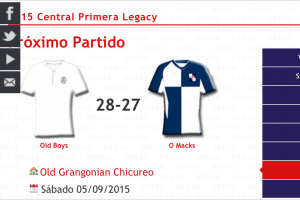
Top 4 Semi-finals (1st XV and 2nd XV)
Oro Final (2nd XV)
The night before the game some members of the club provided the opportunity for the players to stay in a hotel in the city centre to help with the preparation for the final and maximise the performance on the field. We had a team meeting before dinner where the players discussed and agreed the key points/messages/tactics that the players/team would do in the game so that everyone was on the same page and singing from the same hymn sheet. After dinner we had a second meeting where the players discussed what it meant for them to be playing the next day and what they had sacrificed to be in the room at that point. At the end of this meeting before the players went to bed they watched this motivational video:-
Then the morning of the match, before the players left for the ground, there was a quite reminder of the tactics the team agreed on the night before and then the players watched this motivational video:-
At the end of the season I put together another player questionnaire together to get their honest feedback about the season…
Player feedback Questionnaire at the end of the Season:-
- Why do you come to Old Boys…?
- Why do you come training…?
- How much have you enjoyed your ‘Player Experience’ during 2015…? (Plus a Scale 1-10)
- What have been your best bits/highlights of the season…?
- What have been your worst bits/disappointments of the season…?
- How much have you enjoyed my coaching…? (Scale 1-10) Why…?
- What do you think I need to/can work on to get better in my coaching for you in 2016…?
- What would you like to see put in place for 2016 by the coaches…?
- What do you think, we the club, need to do to make your experience even better in 2016…?
The average score for “how happy do you feel about your ‘Player Experience’ during 2015” was… 8.07
The average score for “how much have you enjoyed my coaching” was… 8.13
Training Structure
Training Environment
Coloured Bibs
Player-led Circles
This is a key part of a ‘Player-centred Coaching’ approach… Empowering the players to take ownership of their learning and developing.
Group Motivation
egdhahdah
Backs: Counter Attack training
Backs: Pendulum Group
Pendulum Player-led circles
Team Culture
A key driver in the development of the ‘Team Culture’ was the traditional BBQ on the first Thursday of every month at the Club after training. The key difference that was made was that they became themed BBQs, with a different theme each month…
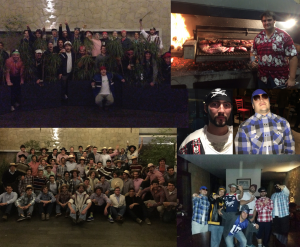
Some of the themes:-
- Sailors & Pirates;
- Gangsters;
- Cueca (The traditional dance of Chile and the Independence Day on the 18th September).
Another key part was making sure that the injured players felt part of the team and keeping in touch with them… Players would regularly post photos in the Old Boys WhatsApp group showing that they were on the road to recovery and doing their “homework’:-
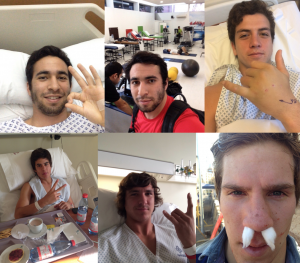
The players drove the training culture too, with physical preparation off the field a key part of the process. Which was two-fold, injury reduction and performance improvement. Players would regularly post photos pre, during or post training, whether in the morning, during the day or in the middle of the night. This became the name “homework done” in the Old Boys WhatsApp group:-
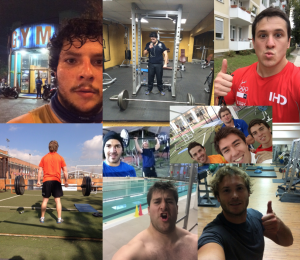
Player-led motivation was another key driver in developing the ‘Team Culture’ through peer pressure showing who was at training and who was not…
Reviews, Self-reflection and Match Analysis
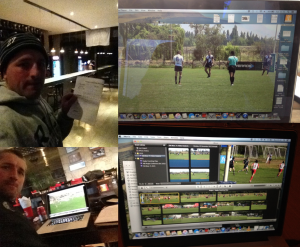
After each training session I would review that session thinking what worked well, what did not work well and what needs to be worked one, both from the team and players’ perspectives plus my own perspective, alongside any general comments, to provide and develop the best training environment possible. I would do this exercise before I left the club, often past 11:30pm, to make sure that it was done, because the odd time when I forgot to do this exercise before I left the club, the next day you could not remember everything about the training session.
Immediately after each match I would write down my thoughts in the following 3 areas, with 3 or 4 points per area depending on how the match went:-
- GOOD things;
- BAD things;
- AREAS TO WORK ON.
During the week I would watch the match video and add any necessary comments to the 3 areas.
Over time, usually at the end of a playing stage, e.g. ADO Qualification Stage, I would then collate these thoughts together to identify any trends and patterns to then plan the next training block in preparation for the next block of matches.
During matches I would make notes in my notebook… Writing observations and thoughts in ‘real-time’ as the match unfolded. I would make notes on the scrums & lineouts, noting whether they were won or lost
In an ideal world you would have an analyst who would do this work for you, but in the real world you have to find efficient ways to do it yourself.
Copa Amistad
Every year the Old Boys Club (Chile) play against the Old Christians Club (Uruguay) and in 2015 it was the turn of Old Boys to travel to Uruguay. This was the second time that I had experienced this symbolic occasion, with the first time in October 2014 in Santiago.
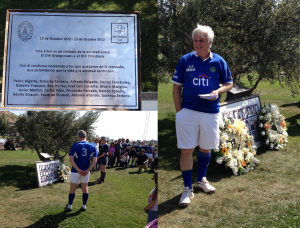
The Copa Amistad commemorates the loss of family and friends from the Old Christians Club who died in a plane crash in the Andes mountain range en route from Montevideo to Santiago on 13th October 1972. The Uruguayan team at the time were on route to play the Chilean team for the playoff match of the Copa Amistad.
MAP PHOTO
I felt very honoured and privileged to be a part of the experience and speak face-to-face with some of the survivors and hear their stories and life experiences, with the medium of rugby uniting the two communities together.
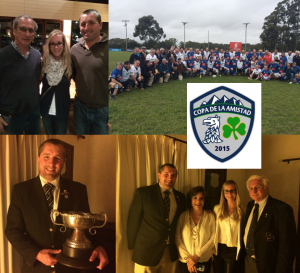
The Gryphons XV
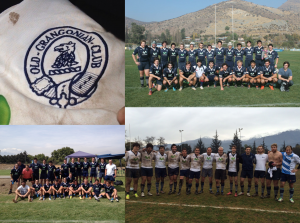
One of the major influences that the ‘Player-centred Coaching’ Philosophy had was more players coming to the Club to train and play… This meant that we created a third team to play. It was very important that every player that came training had an opportunity to play, because that is one of the main reasons that the players would come to the club.
This team needed an identity that would inspire the players and to help the buy-in of the players. The team would be called the “Gryphons XV” with the gryphon at the heart of the club badge, and the school badge.
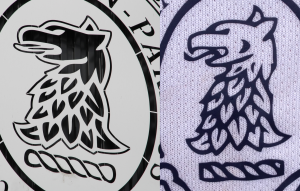
It provided a great link between the young players that had recently left the school and the older players that had been playing in the club for many years, plus Performance players coming back from injury needing game time to get match fit ready to be called up to the 2nd XV or 1st XV.
Comparing 2014 v. 2015
|
2014 |
2015 |
|
|
1st XV Championship |
13th |
Top 4 |
|
2nd XV Championship |
Did not exist |
2nd |
|
3rd XV |
No |
Yes |
|
Average number of players at training… |
25 |
51 |
|
Maximum number of players at a training session… |
74 |
|
|
Teams |
1, sometimes 2 |
2, sometimes 3 |
|
Leadership Group |
No |
Yes |
|
‘Standards and Expectations’ set by the players |
No |
Yes |
|
Club Spirit |
Very Low |
Very High |
|
Athletic Development |
No |
Yes |
|
Principles of Coaching |
Drills based |
Games based |
|
Warm-up |
Touch Rugby |
Athletic Development |
|
Stretching |
Static |
Dynamic |
|
Training Field |
1 |
1 |
|
Coaches |
2 |
2, sometimes 3, + GOGs |
|
Coaching Philosophy |
Coach-centred |
Player-centred |


